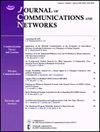基于总线/环混合拓扑的10BASE-T1S汽车以太网故障恢复
IF 3.2
3区 计算机科学
Q2 COMPUTER SCIENCE, INFORMATION SYSTEMS
引用次数: 0
摘要
汽车以太网已经成为一种通信协议,以满足先进驾驶辅助系统(ADAS)、自动驾驶和互联汽车等应用日益增长的需求。该技术通过提供更高的带宽和支持双向通信,超越了传统控制器局域网(CAN)的能力,这对于实时应用和通过以太网交换机轻松扩展网络至关重要。此外,汽车以太网通过IEEE 802网络中的一组标准——时间敏感网络(TSn),确保在限定延迟内传输数据包,实现低数据包延迟和抖动,以及低数据包丢失,从而确保时间关键应用的运行。TSN还有助于汽车以太网,这需要可靠地从时间关键型应用程序传递消息,而不会出现错误或丢失。在TSN标准中,帧复制和消除可靠性(frr)作为一种提供冗余的技术脱颖而出。尽管FRER在检测数据丢失方面很有用,但它消耗大量带宽并且仅在网状拓扑中工作。因此,在10BASE-T1S等总线型车载以太网中很难应用。总线拓扑提出了一个问题,其中如果一段电缆被损坏,整个网络的通信变得不可能。在本文中,我们提出了一个容错冗余协议在10BASE-T1S总线拓扑。我们的方法涉及调整物理层避免碰撞(PLCA)协议,该协议最初用于10BASE-T1S总线拓扑,用于环型连接中的操作。这种方法提供了与现有PLCA协议保持兼容性的优点。我们通过仿真和硬件仿真验证了我们提出的方法的有效性,证实了它在发生硬故障(如电缆断开和节点故障)时恢复网络功能的能力。本文章由计算机程序翻译,如有差异,请以英文原文为准。
Fault recovery of 10BASE-T1S automotive ethernet with bus/ring hybrid topology
Automotive Ethernet has emerged as a communication protocol to meet the escalating demands in applications such as advanced driver assistance systems (ADAS), autonomous driving, and connected vehicles. This technology surpasses the capabilities of the traditional controller area network (CAN) by providing higher bandwidth and supporting bidirectional communication, which is essential for real-time applications and the easy expansion of networks through Ethernet switches. Furthermore, automotive Ethernet guarantees packet transmission within the bounded latency, achieving low packet latency and jitter, and low packet loss through time-sensitive networking (TSn), a set of standards within the IEEE 802 network, which ensures the operation of time-critical applications. TSN also helps for automotive Ethernet, which requires reliability to deliver messages from time-critical applications without errors or loss. Among TSN standards, frame replication and elimination for reliability (FRER) stands out as a technology that provides redundancy. Although FRER is useful in detecting data loss, it consumes significant bandwidth and works only in a mesh topology. Therefore, it is difficult to be used in the bus type automotive Ethernet such as 10BASE-T1S. The bus topology presents a problem wherein if a segment of the cable becomes damaged, communication throughout the entire network becomes impossible. In this paper, we propose a fault-tolerant redundancy protocol for within the 10BASE-T1S bus topology. Our method involves adapting the physical layer collision avoidance (PLCA) protocol, originally utilized in the 10BASE-T1S bus topology, for operation in a ring-type connection. This approach offers the advantage of maintaining compatibility with the existing PLCA protocol in use. We verify the effectiveness of our proposed method through simulations and hardware emulation, confirming its ability to restore network functionality in the event of hard faults, such as cable disconnections and node failures.
求助全文
通过发布文献求助,成功后即可免费获取论文全文。
去求助
来源期刊
CiteScore
6.60
自引率
5.60%
发文量
66
审稿时长
14.4 months
期刊介绍:
The JOURNAL OF COMMUNICATIONS AND NETWORKS is published six times per year, and is committed to publishing high-quality papers that advance the state-of-the-art and practical applications of communications and information networks. Theoretical research contributions presenting new techniques, concepts, or analyses, applied contributions reporting on experiences and experiments, and tutorial expositions of permanent reference value are welcome. The subjects covered by this journal include all topics in communication theory and techniques, communication systems, and information networks. COMMUNICATION THEORY AND SYSTEMS WIRELESS COMMUNICATIONS NETWORKS AND SERVICES.

 求助内容:
求助内容: 应助结果提醒方式:
应助结果提醒方式:


